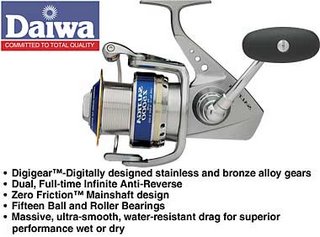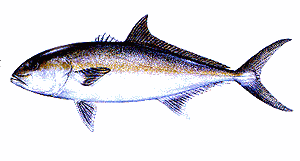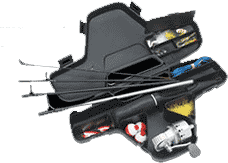Dolphin / Dorado / Mahi Mahi

One of the fastest-growing fish, thought to live no more than five years. A dorado is capable of a swimming speed of over 50 miles an hour. Dolphin spawn in warm ocean currents throughout much of the year where their young are found in sargassum weed and they feed on flying fish and squid.
Trolling is the most traditional way of catching dolphin, but we've found that sight fishing has been producing very well the last few years and gives anglers something to do rather than sit and wait for the bite.
A very aerobatic fish, often leaping clear of the water, one of the fastest-growing fish, thought to live no more than 5 years, swimming speed estimated at 50 knots, spawns in warm oceanic currents throughout much of the year, young found in sargassum weed, feeds on flying fish and squid.
 Zero Friction™ Mainshaft design for a smoother, more powerful retrieve. The reverse-tapered, machined aluminum spool with cut proof Titanium Nitrided spool lip allows for effortless casts, superb line lay, and never compromises the integrity of your line with abrasion. A total of fifteen
Zero Friction™ Mainshaft design for a smoother, more powerful retrieve. The reverse-tapered, machined aluminum spool with cut proof Titanium Nitrided spool lip allows for effortless casts, superb line lay, and never compromises the integrity of your line with abrasion. A total of fifteen








